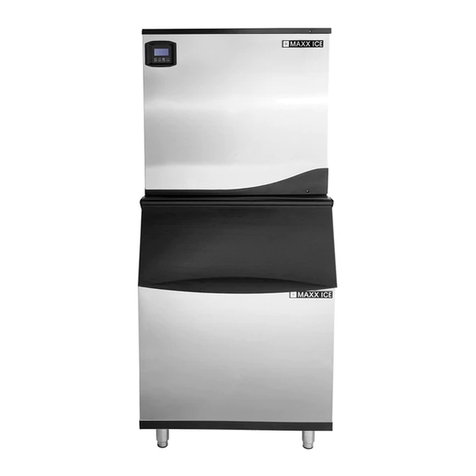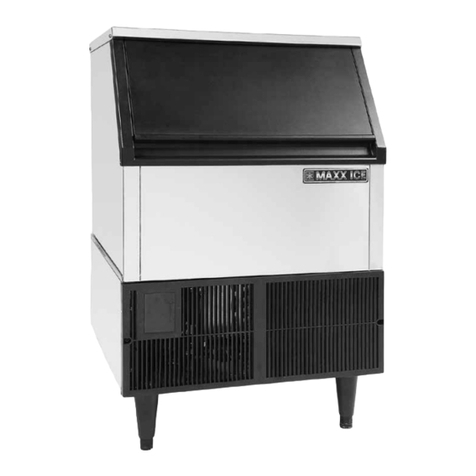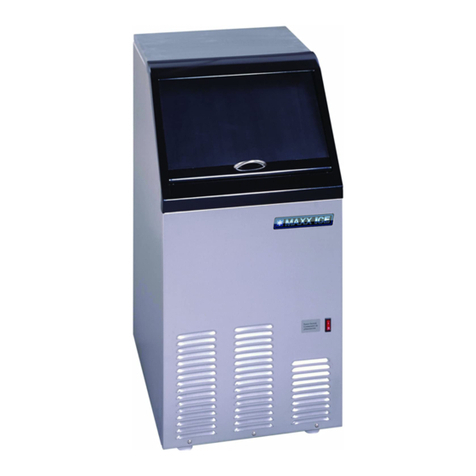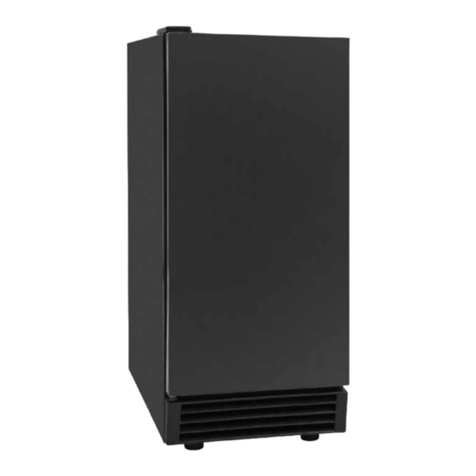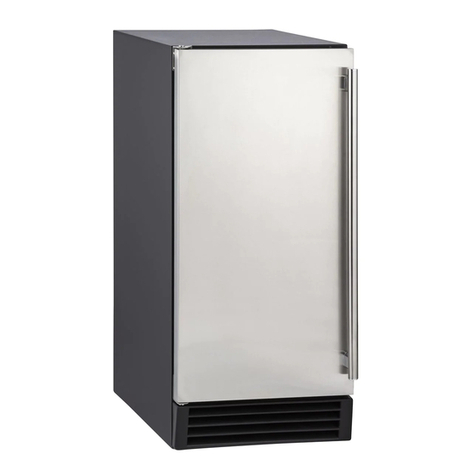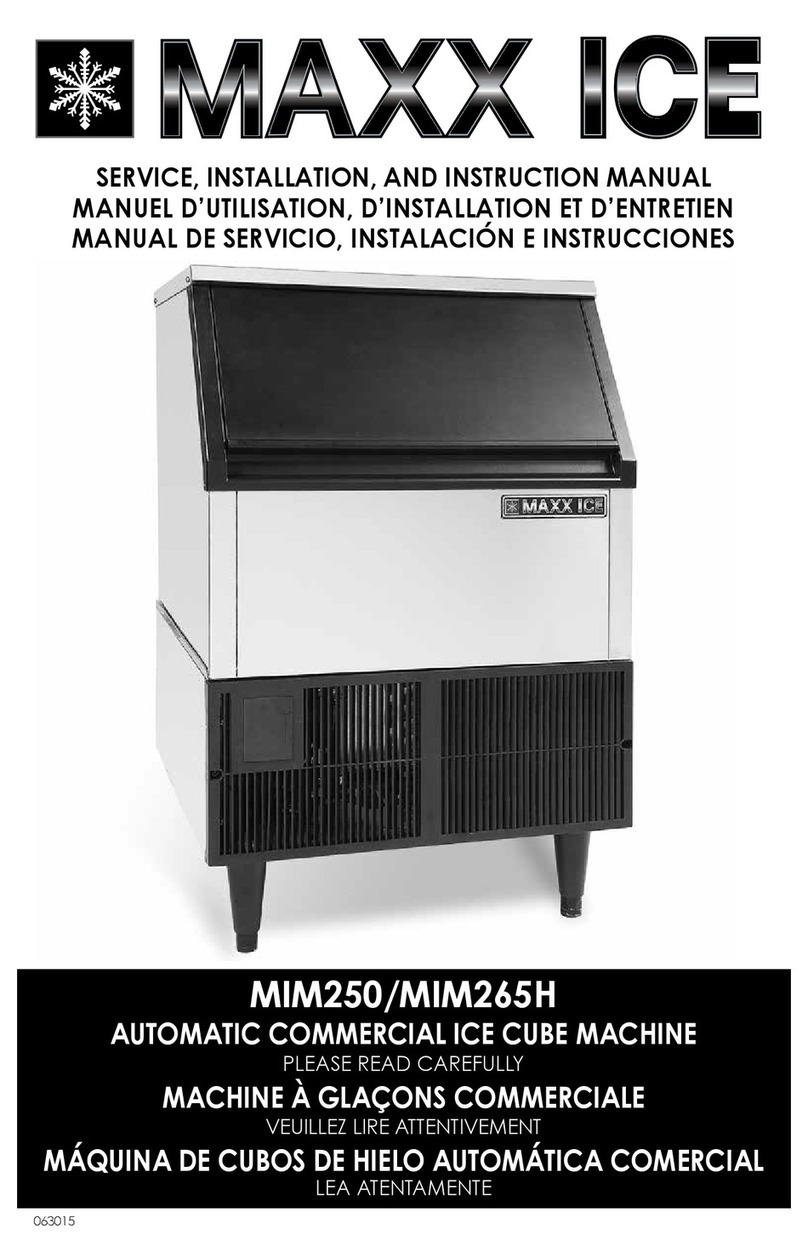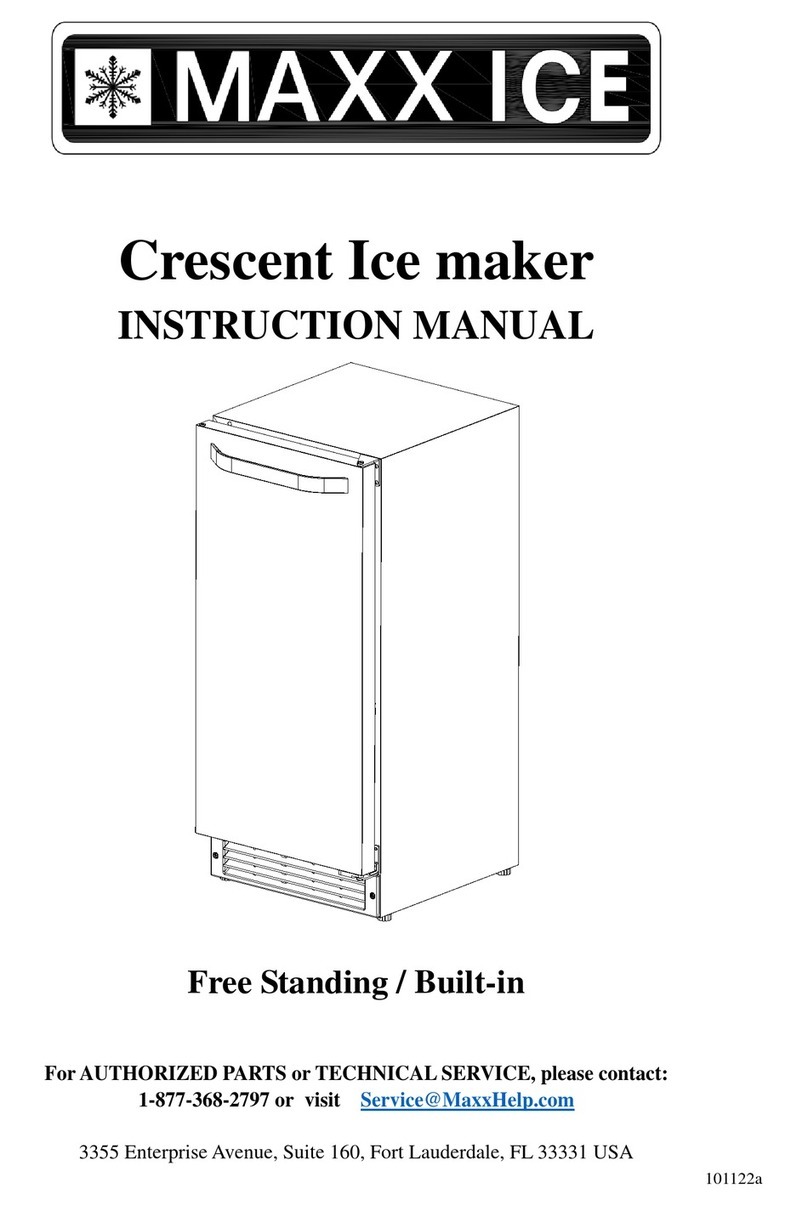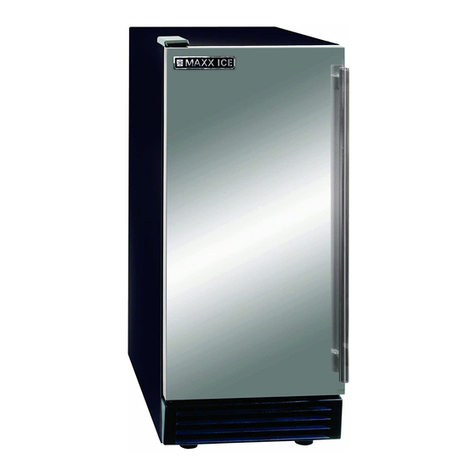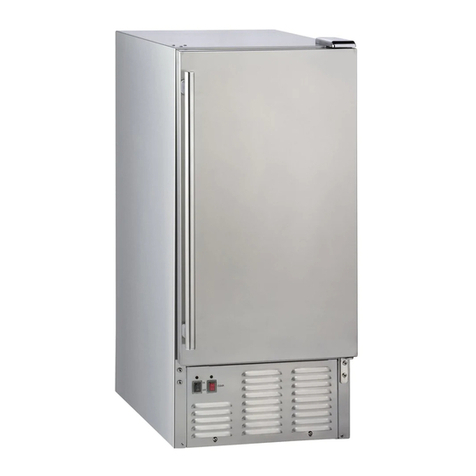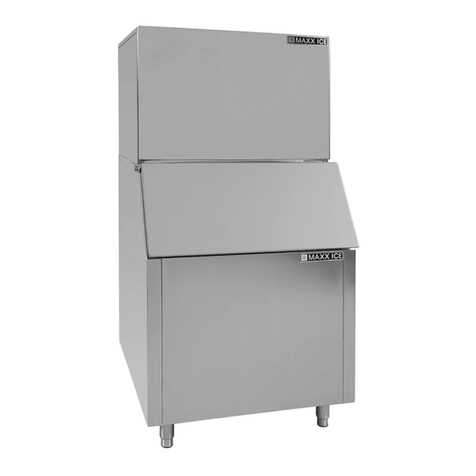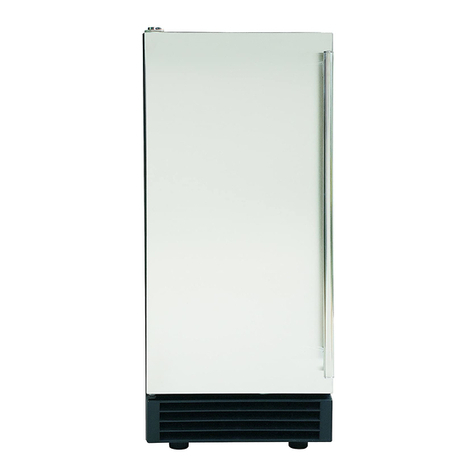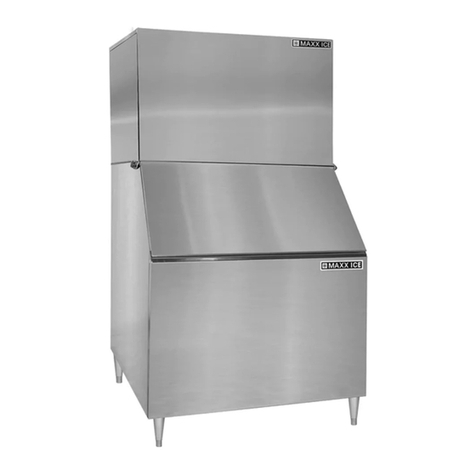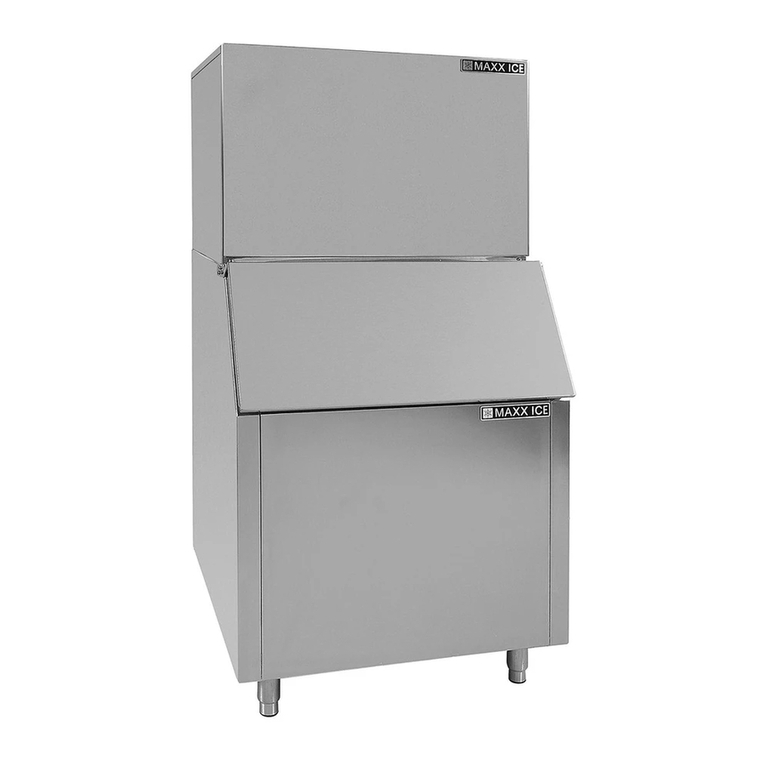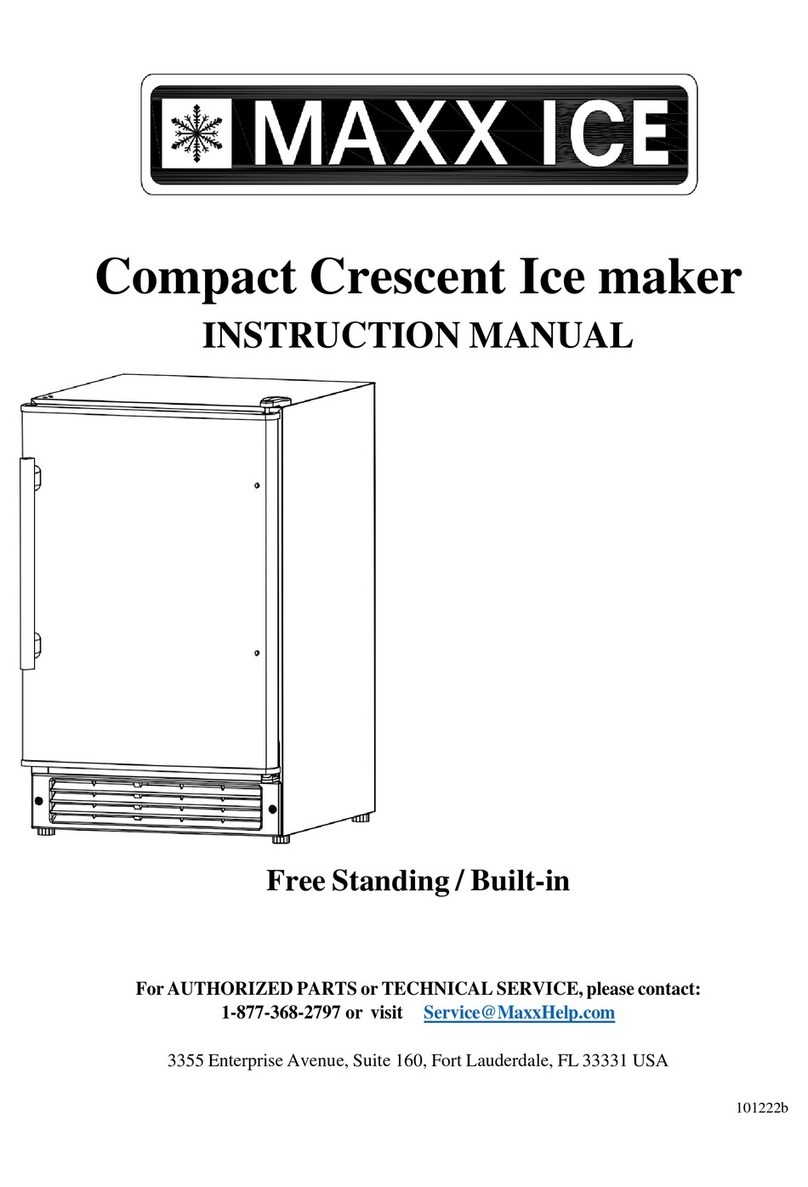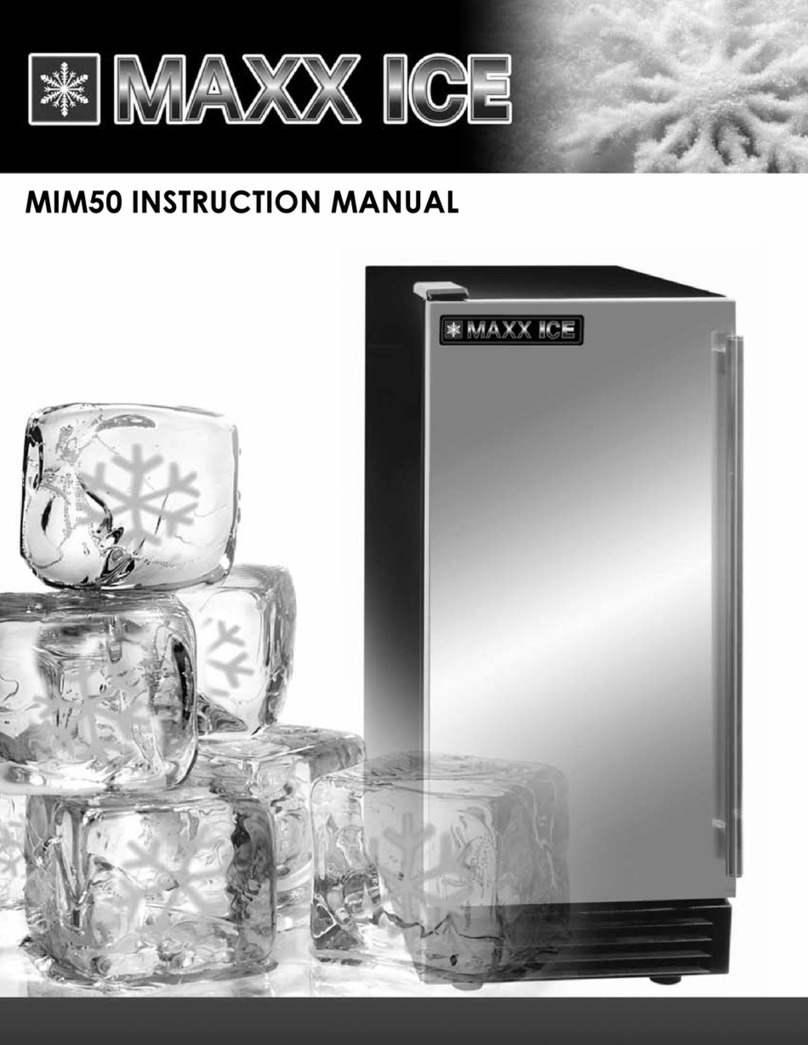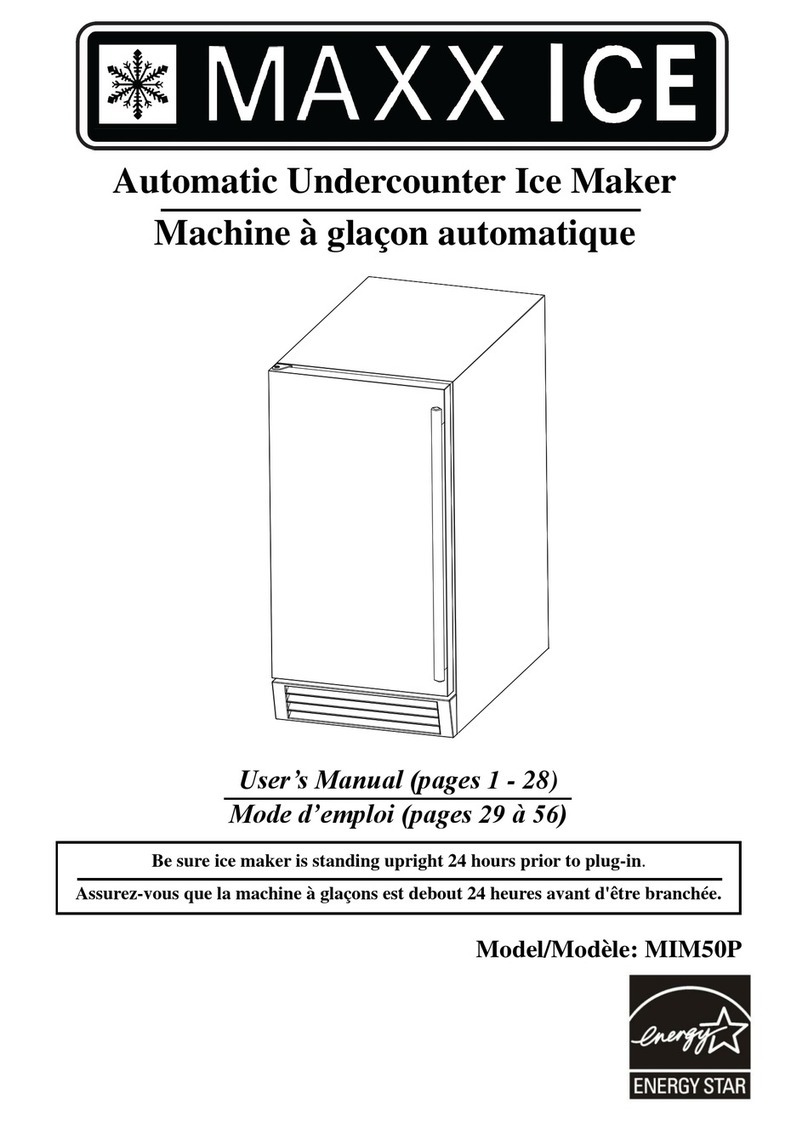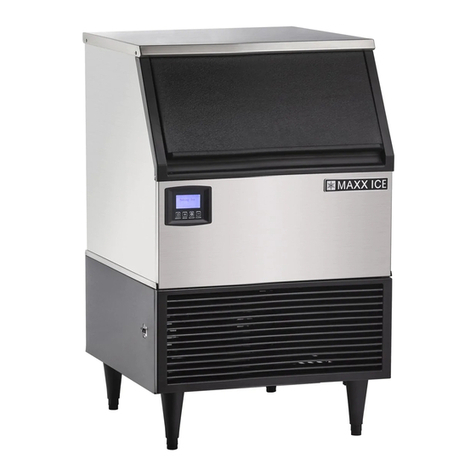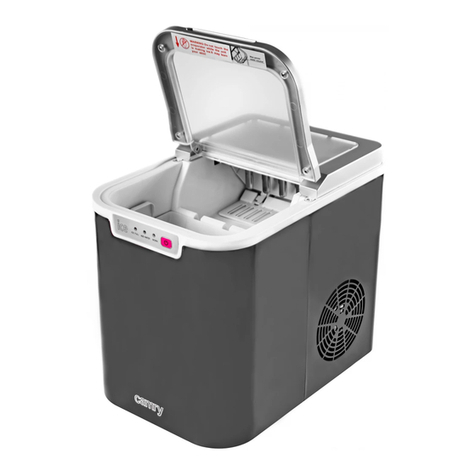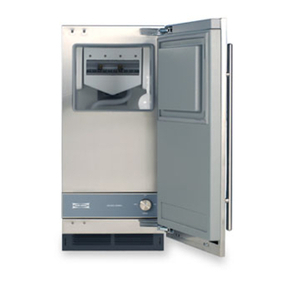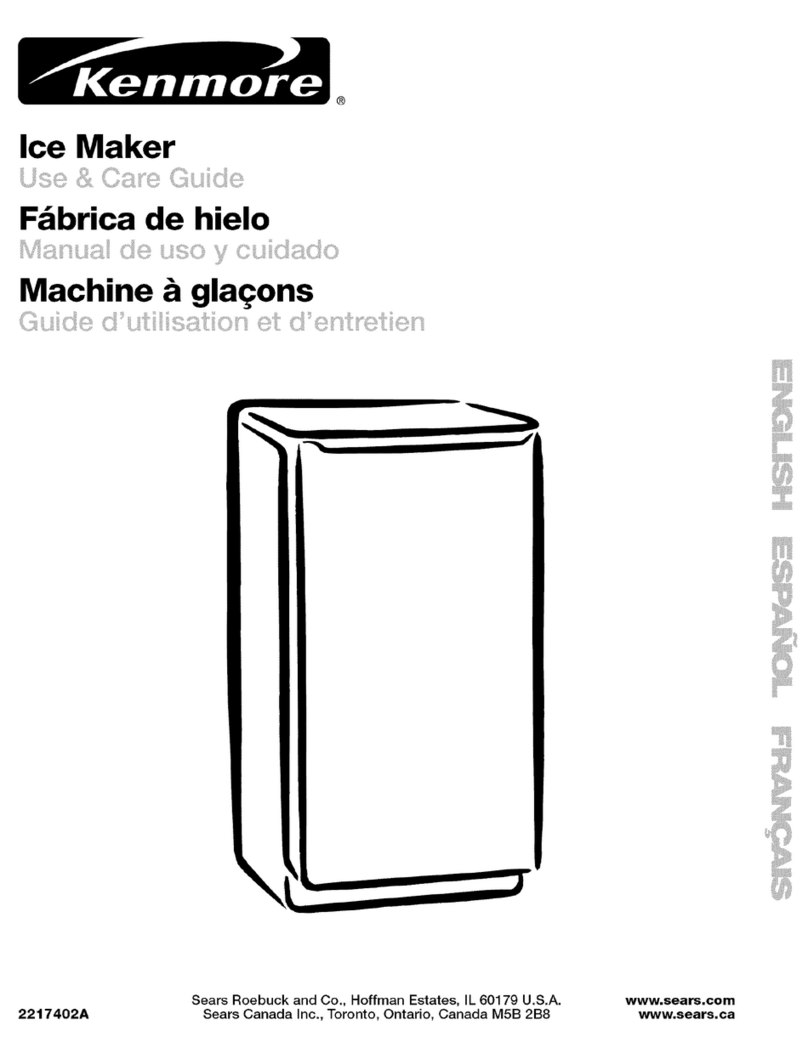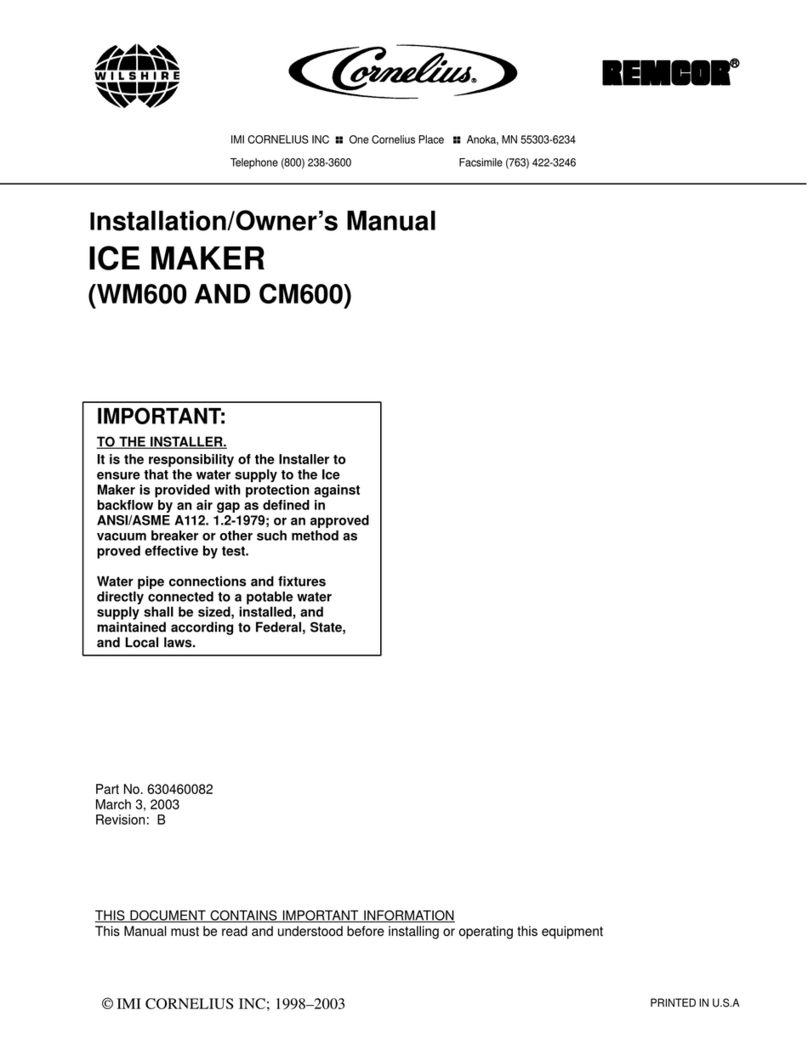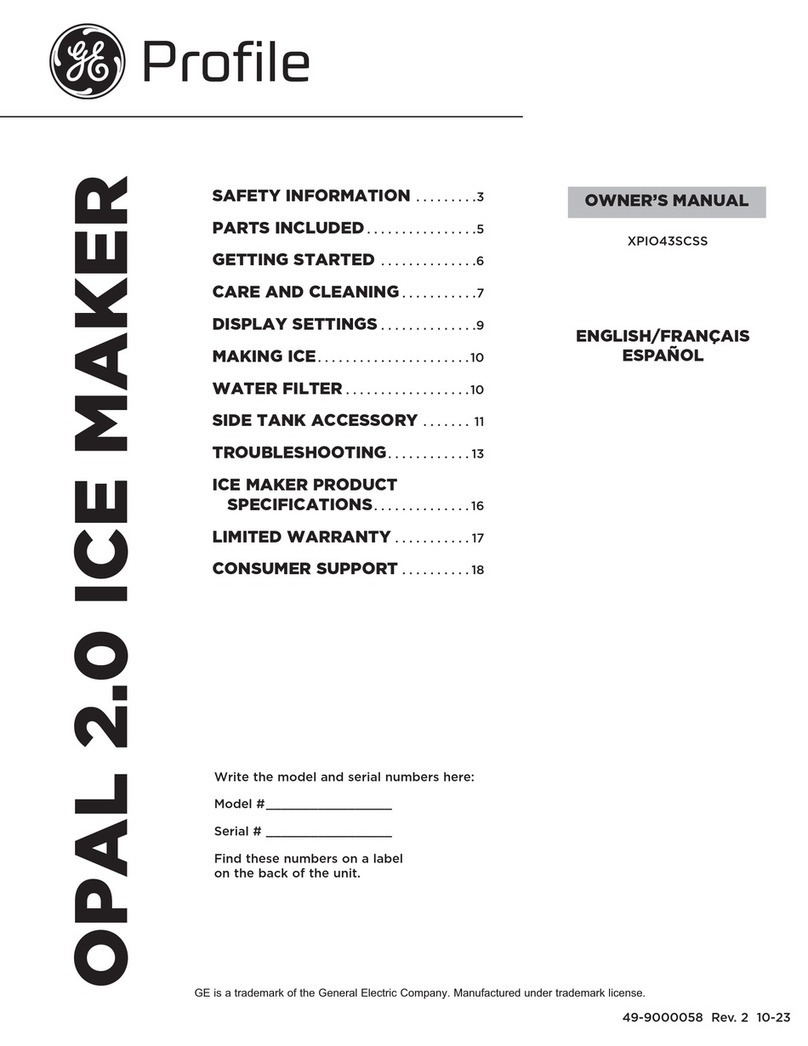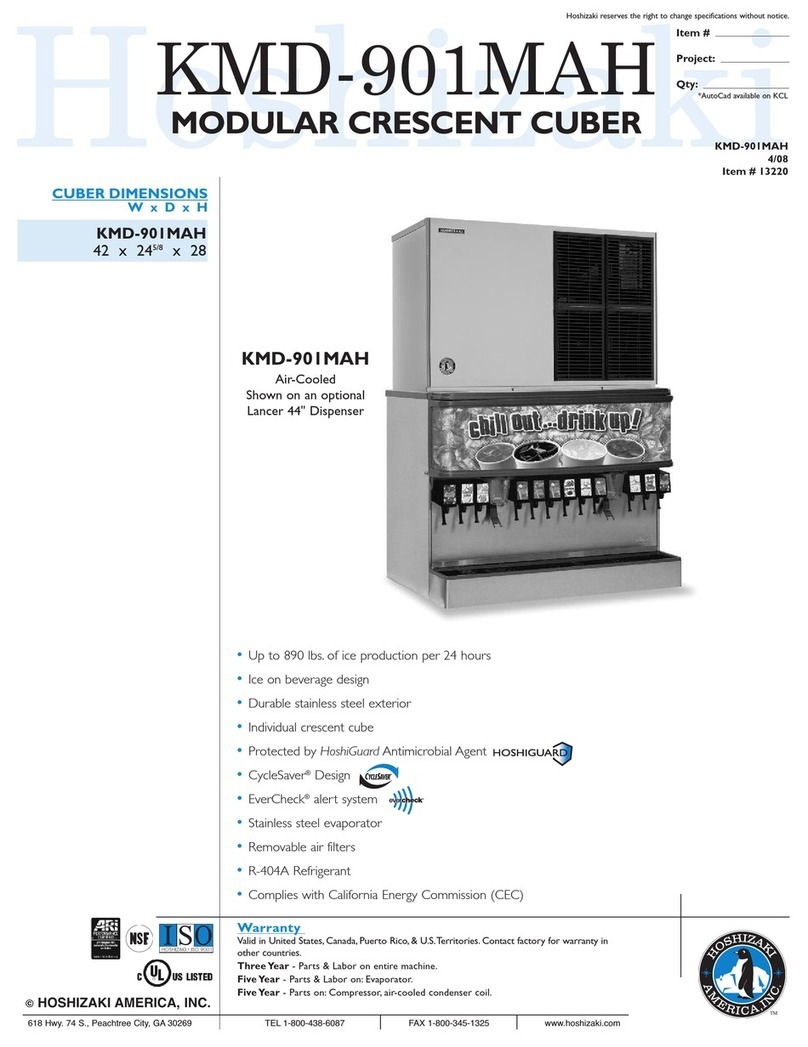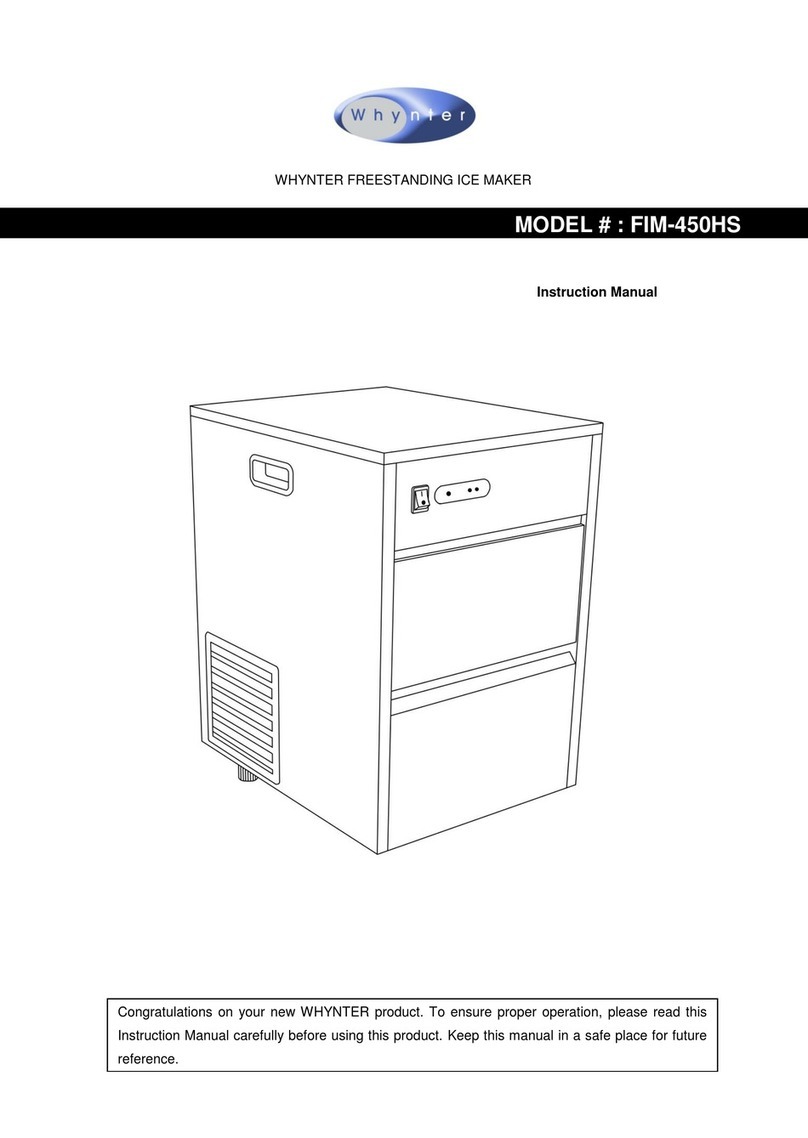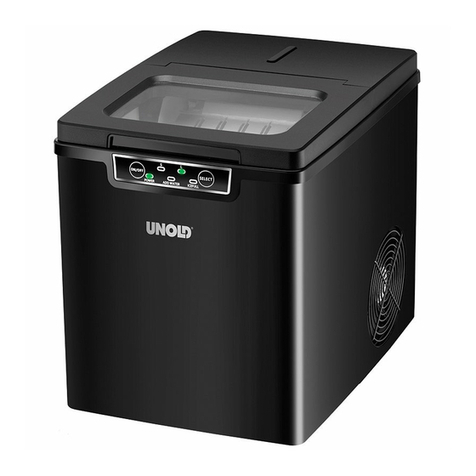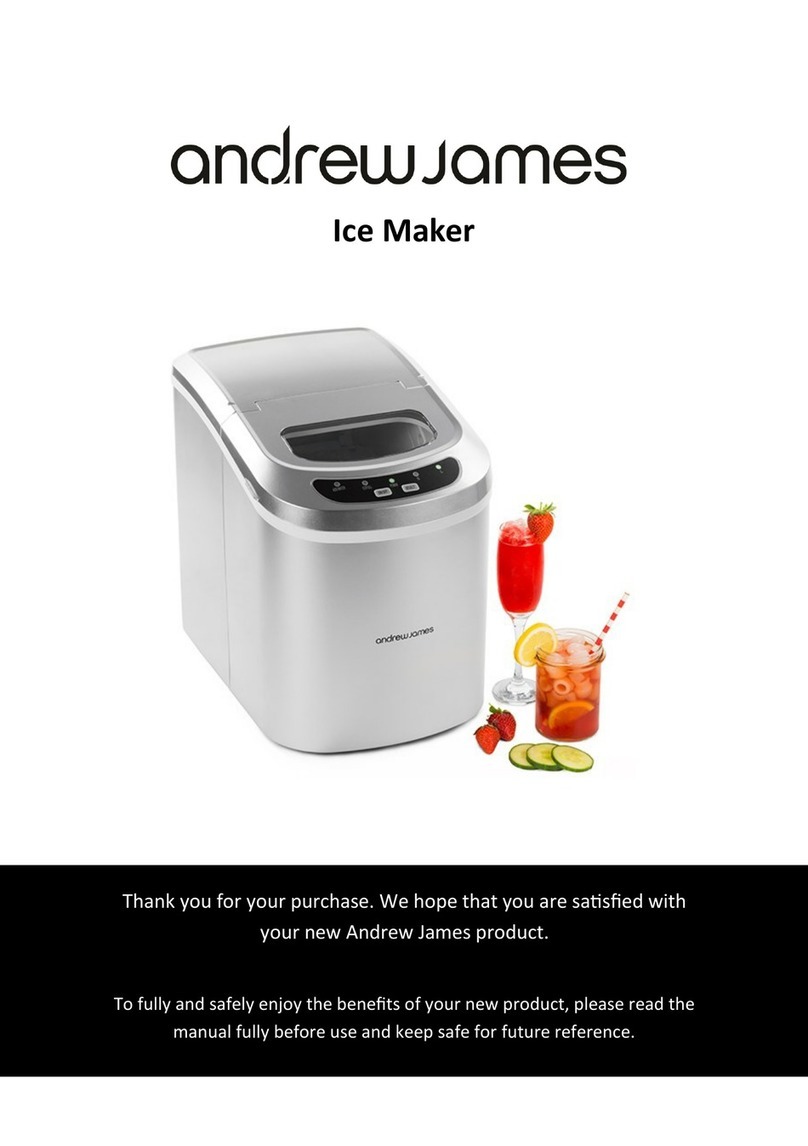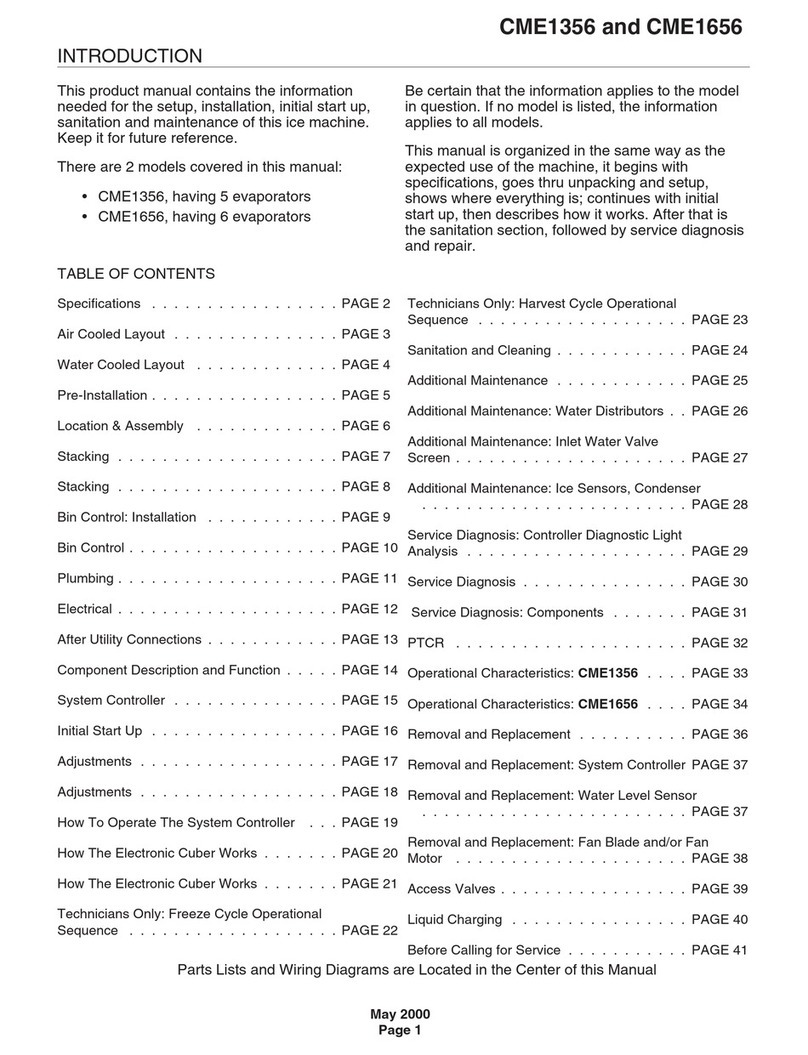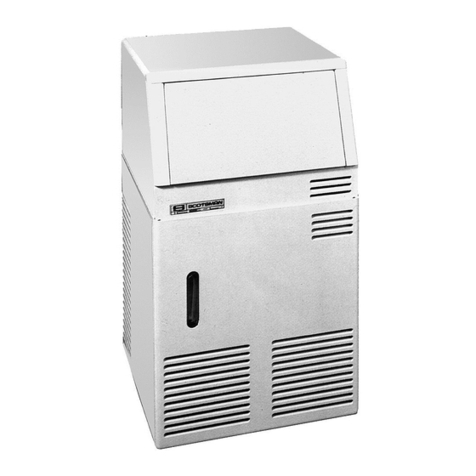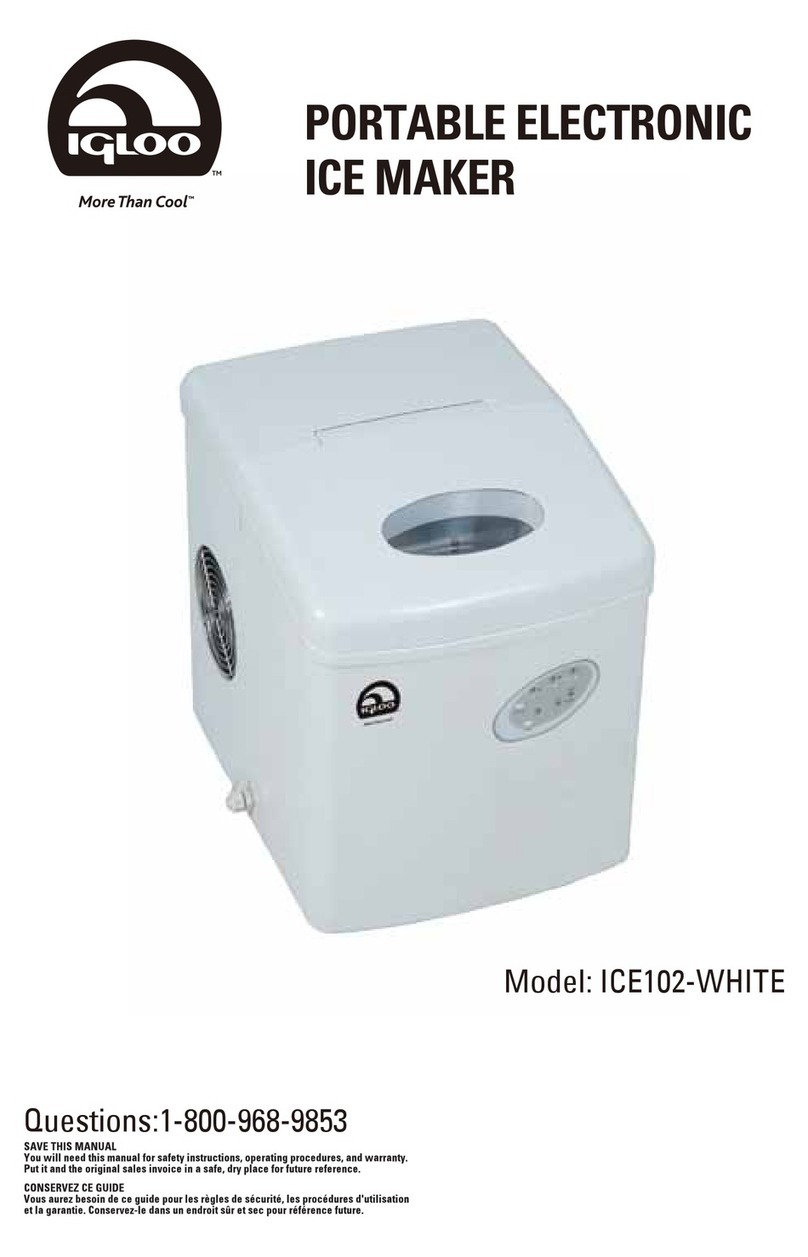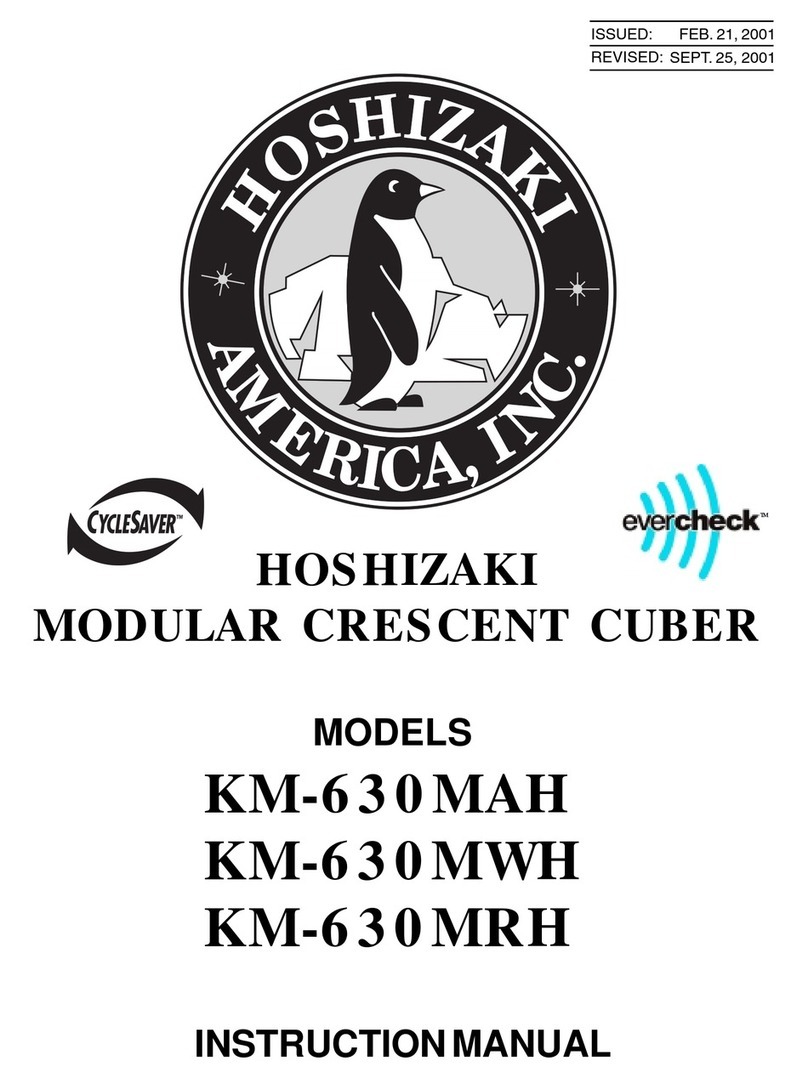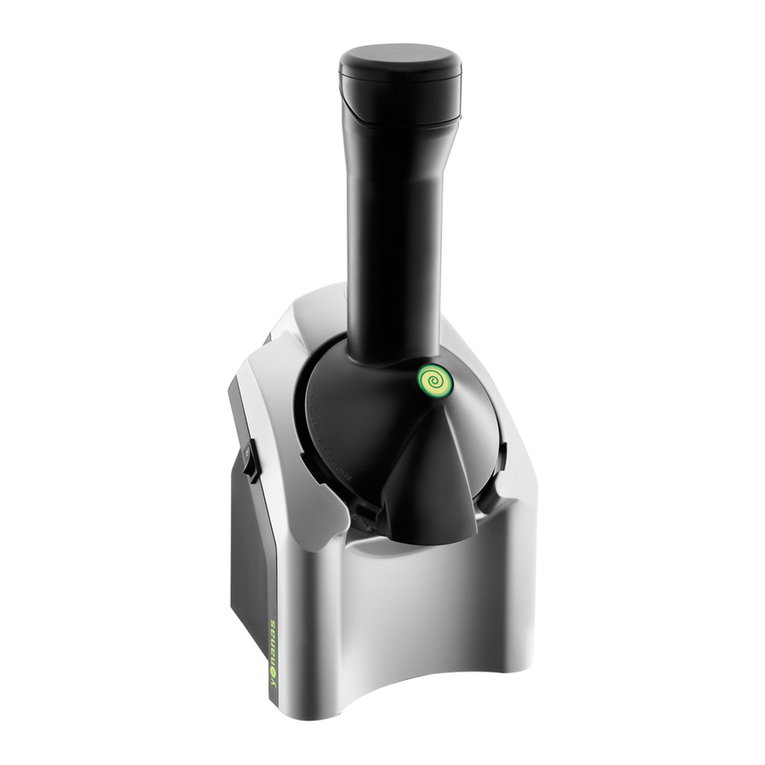9
Circuit Description
1. Electrify Status For The First Time
As the icemaker is properly installed. switch on the water tap, let the water trough full (reach on the
level), then turn the Power switch to the ON position on the back panel. The icemaker will start
working automatically
In this status, the time is fixed about 3 minutes. This function is also helpful to protect the
compressor avoiding restart within 3 minutes.
At this status, the White, Green, Yellow and Red LEDs are light together.
2. Ice-making Status
The compressor, motor fan and pump are powered on. The hot gas solenoid valve is powered off.
When this green LED is lit, the unit is working in the ice making mode controlled by a temperature
probe on the evaporator. When the green LED is flashing, the unit is working in the ice making
mode controlled by a fixed timer.
The fan motor is also controlled by a condenser sensor. When the ambient temperature is too lower,
the motor fan stop working for good condensation to refrigerant.
3. Ice Harvest Status
The pump is powered off. The hot gas solenoid valve, compressor and motor fan is powered on.
The fan motor is also controlled by a condenser sensor. When the ambient temperature is too lower,
the motor fan stop working for good condensation to refrigerant.
The Yellow LED indicates the ice harvest status.
4. Ice Full Status And Cold Preservation Stage
If the ice bin is fulfilled with ice, the machine stops making ice and turn to cold preservation stage
automatically.
In this status, the compressor works regularly to keep the lower temperature for lower ice melting.
The rest of the electric components are powered off. The WHITE LED indicates the ice full status
and the GREEN AND YELLOW LEDs together indicates the cold preservation status .
5. Cleaning Status
Turn the machine CLEAN SWITCH at the CLEAN in 3 minutes after the POWER SWITCH is
turned on, the machine turn to Cleaning Status. At this status, the pump is powered on. Compressor,
motor fan and are powered off. The GREEN and YOLLOW LEDs are flashing together. To stop the
cleaning mode, turn the machine “OFF” at the Power switch or it will turned off automatically after
30 minutes.
NOTE: In order to start the Clean Status the power switch must be on. The CLEAN switch must be
turned in 3 before the COMPRESSOR starts. To clean, it is no use turning the CLEAN switch when
machine is in ice-making status or ice-harvest status.
Controller box:
Instructions for LEDs and buttons:
1. White LED: Ice full indicator light.
When this LED is lit, the ice storage bin is full of ice or there is something between the ice-full
sensor and the evaporator. The unit will stop making ice. When ice cubes are taken out of the ice
storage bin making the ice-full probe free, the white LED will keep flashing for 3 minutes. Then the
unit will restart and return to the ice making mode.
2. Green LED: Ice making indicator light.
When this LED is lit, the unit is working in the ice making mode controlled by a temperature probe
on the evaporator. When the green LED is flashing, the unit is working in the ice making mode
controlled by a fixed timer.
3. Yellow LED: Ice harvest indicator light.
When this LED is lit, the unit is working in the ice harvest mode controlled by ice-full probe.
